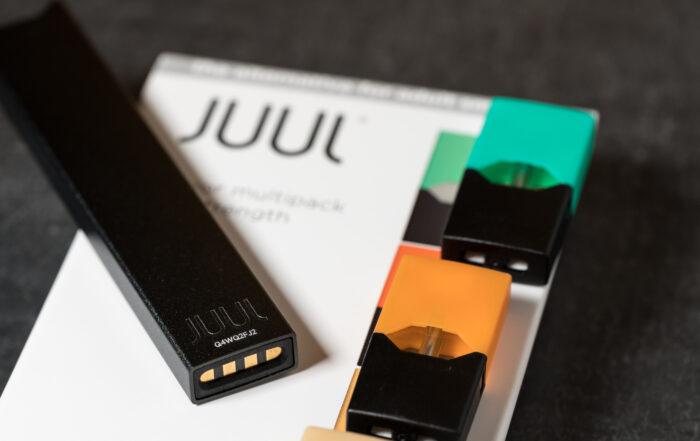
Regulating Contrast Agents as Drugs: What’s Next for FDA?
By Yifan Wang*
Contrast agents play a crucial role in medical imaging procedures, such as computed tomography (CT) and magnetic resonance imaging (MRI). Contrast agents also include radiopharmaceuticals for disease treatment, especially cancer therapy. The market for contrast media and contrast agents is expected to reach $5.9 billion by 2026.[1] FDA regulation of these products recently attracted congressional attention, spurring a new law passed in December 2022 that requires FDA to regulate all contrast agents as drugs.[2]
The new law ensures regulatory consistency for contrast agents and is Congress’s response to the 2021 case Genus Medical Technologies, LLC v. FDA. In this case, the U.S. Court of Appeals for the DC Circuit found that the Federal Food, Drug, and Cosmetic Act (FDCA) did not grant FDA discretion to regulate a product as a drug when the product meets the statutory definition of a device under the FDCA.[3] The DC Circuit affirmed the district court’s decision vacating FDA’s classification of a Genus product as a drug. The agency then announced that it intended to reexamine whether imaging agents used in CT and MRI procedures meet the FDCA’s definition of a device.[4]
Under the FDCA, products are classified based on their respective statutory definitions. The FDCA defines “drugs” to include “articles intended for use in the diagnosis, cure, mitigation, treatment, or prevention of disease in man . . . .”[5] The FDCA defines “devices” to include:
an instrument, apparatus, implement, machine, contrivance, implant, in vitro reagent, or other similar or related article, including any component, part, or accessory, which is . . . intended for use in the diagnosis of disease or other conditions, or in the cure, mitigation, treatment, or prevention of disease, in man … and which does not achieve its primary intended purposes through chemical action within or on the body of man or other animals and which is not dependent upon being metabolized for the achievement of its primary intended purposes.[6]
The DC Circuit noted that the definitions of drugs and devices share a common intended-use clause. However, the FDCA distinguishes devices from drugs by adding both an instrument clause (“an instrument, apparatus, implement, machine, contrivance, implant, in vitro reagent, or other similar or related article, including any component, part, or accessory”) and a mode-of-action clause (“and which does not achieve its primary intended purposes through chemical action within or on the body of man or other animals and which is not dependent upon being metabolized for the achievement of its primary intended purposes”) to the definition of a device.
Suppose a product is intended for diagnosis, cure, mitigation, treatment, or prevention of disease, yet it does not achieve its primary intended purposes via chemical action on or within the body or via metabolization. In such a case, it should be regulated as a device. However, under the new law, a contrast agent is categorically regulated as a drug, regardless of how the contrast agent achieves the primary intended purpose.
The new law resolves the uncertainty surrounding the regulatory status of contrast agents post-Genus decision. FDA has designated the Center for Drug Evaluation and Research to regulate drugs and the Center for Devices and Radiological Health to regulate devices. By classifying all contrast agents as drugs, FDA can achieve administrative efficiency and regulatory consistency. For instance, if some contrast agents were regulated as devices and others as drugs, it could lead to a situation where similar agents are subject to varying safety, efficacy, manufacturing, and post-approval reporting standards. This inconsistent regulation could cause confusion in the industry as manufacturers would need to navigate different regulatory schemes for their products.
Critics of the new law argue that it disregards the scientific fact that contrast agents work through different mechanisms. For instance, some agents merely coat the inside of the esophagus, stomach lining, or intestines and are eliminated from the body intact.[7] Such products are physiologically inert, according to critics, and should be classified as devices. On the other hand, other contrast agents work by detecting body structures or lesions of interest through metabolization.[8] These agents require chemical action in the body to achieve their intended purpose, and therefore, should be classified as drugs. Critics contend that only such contrast agents that require metabolization should be regulated as drugs, while the others should be regulated as devices.
Despite their arguments, critics have failed to consider the risks associated with how contrast agents are delivered into the body as a finished product. For instance, some agents are delivered intravenously via sterile injectables, and any quality defects in these products can lead to serious, life-threatening injuries. Alternatively, when agents are ingested orally as a suspension, microbiological-, potency-, and stability-related manufacturing problems may arise.[9] Moreover, since pediatric and immunocompromised patients often use contrast agents, any quality defects can pose a greater risk to these vulnerable populations. For these reasons, contrast agents should be subject to the same requirements as drugs to maximize patient safety.
Many companies fight jurisdictional battles for their products, since drugs and devices are subject to drastically different regulatory schemes. As a result of these different regulatory schemes, it is more expensive for a sponsor to develop and market a drug than a device. The mean development cost for a novel therapeutic complex medical device is $54 million,[10] while the average development cost of a new prescription drug is almost $2.6 billion.[11] Additionally, the user fee for a new drug application with clinical data is about $3,242,026, while the fee for a device premarket approval is about $441,547.[12]
Congress recognizes that the new law will inevitably add a financial burden to companies whose contrast agents were previously regulated as devices but must now be classified as drugs. To ease this burden, the law waives the application fee for such products. FDA should promptly implement the fee waiver policies, especially to support small businesses that currently market contrast agents regulated as devices but now must submit new drug applications due to the law. These fee waiver policies will ensure that small pharmaceutical companies can stay afloat and continue to use their resources for research, development, and innovation to benefit patients.
*The author would like to thank Professor Rena Steinzor for her insightful comments and suggestions.
[1] Contrast Media/Contrast Agent Market, Imaging Technology News, https://www.itnonline.com/article/contrast-mediacontrast-agent-market (last accessed Mar. 20, 2023).
[2] Pub. L. No. 117-328, Consolidated Appropriations Act, 2023, Division FF, § 3621.
[3] Genus Med. Techs. LLC v. U.S. Food & Drug Admin., 994 F.3d 631, 639 (D.C. Cir. 2021).
[4] Genus Medical Technologies LLC Versus Food and Drug Administration; Request for Information and Comments, 86 Fed. Reg. 43,553 (Aug. 9, 2021).
[5] 21 U.S.C. § 321(g)(1)(B).
[6] 21 U.S.C. § 321(h)(1).
[7] Barium Sulfate Contrast Medium, Radiopaedia, https://radiopaedia.org/articles/barium-sulfate-contrast-medium?lang=us (last accessed Mar. 20, 2023).
[8] FDA Approves Iobenguane I 131 for Rare Adrenal Gland Tumors, U.S. Food & Drug Admin., https://www.fda.gov/drugs/resources-information-approved-drugs/fda-approves-iobenguane-i-131-rare-adrenal-gland-tumors (last accessed Mar. 20, 2023).
[9] Oral Solutions and Suspensions: Guide to Inspections Oral Solutions and Suspensions, U.S. Food & Drug Admin. (Nov. 17, 2014), https://www.fda.gov/inspections-compliance-enforcement-and-criminal-investigations/inspection-guides/oral-solutions-and-suspensions-894 (last accessed Mar. 20, 2023).
[10] Aylin Sertkaya, Rebecca DeVries, Amber Jessup & Trinidad Beleche, Estimated Cost of Developing a Therapeutic Complex Medical Device in the US, JAMA Network, https://jamanetwork.com/journals/jamanetworkopen/fullarticle/2796179 (last accessed Nov. 7 2022).
[11] Thomas Sullivan, A Tough Road: Cost to Develop One New Drug is $2.6 Billion; Approval Rate for Drugs Entering Clinical Development is Less than 12%, Policy & Medicine, https://www.policymed.com/2014/12/a-tough-road-cost-to-develop-one-new-drug-is-26-billion-approval-rate-for-drugs-entering-clinical-de.html.
[12] The fees are for Fiscal Year 2023. See Medical Device User Fee Amendments (MDUFA), U.S. Food & Drug Admin., https://www.fda.gov/industry/fda-user-fee-programs/medical-device-user-fee-amendments-mdufa (last accessed Nov. 7, 2022); Generic Drug User Fee Amendments, U.S. Food & Drug Admin., https://www.fda.gov/industry/fda-user-fee-programs/generic-drug-user-fee-amendments (last accessed Nov. 7, 2022).
Update Magazine
Summer 2023

 YIFAN WANG earned her JD from University of Maryland Francis King Carey School of Law, and PhD in Chemical and Biochemical Engineering from Rutgers University, New Brunswick. Wang’s goal is to embrace the challenges at the intersection between life sciences, law, and policy.
YIFAN WANG earned her JD from University of Maryland Francis King Carey School of Law, and PhD in Chemical and Biochemical Engineering from Rutgers University, New Brunswick. Wang’s goal is to embrace the challenges at the intersection between life sciences, law, and policy.





